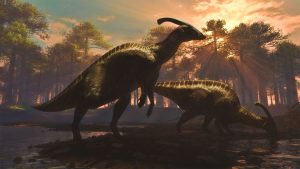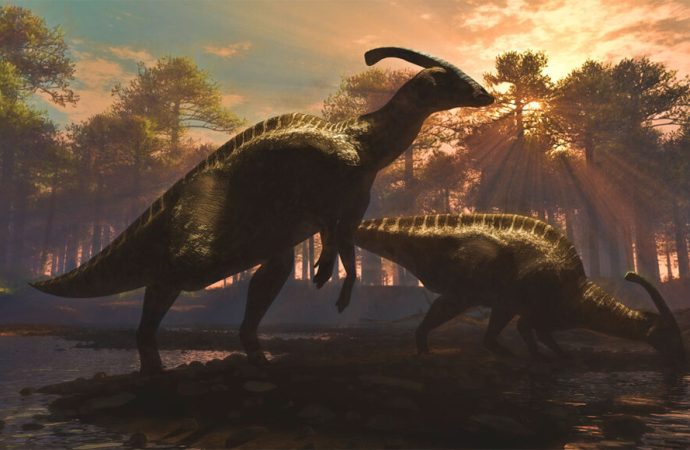Introduction: The extinction of dinosaurs is one of Earth’s most enigmatic puzzles, captivating the curious minds of scientists and enthusiasts alike. Over the years, various theories have surfaced, attempting to shed light on this cataclysmic event. In this intriguing article, we delve into the compelling connection between volcanic activity and the extinction of these ancient
Introduction:
The extinction of dinosaurs is one of Earth’s most enigmatic puzzles, captivating the curious minds of scientists and enthusiasts alike. Over the years, various theories have surfaced, attempting to shed light on this cataclysmic event. In this intriguing article, we delve into the compelling connection between volcanic activity and the extinction of these ancient giants. Join us as we embark on a journey through prehistoric times, rethinking the dinosaur extinction puzzle. Roy Chapman Andrews, an eminent figure in paleontology, will guide us through this fascinating exploration.
Dinosaurs and the Cretaceous-Paleogene Extinction
The Cretaceous-Paleogene (K-Pg) extinction event, approximately 66 million years ago, marked the end of the Mesozoic Era and the reign of the dinosaurs. It’s a pivotal moment in Earth’s history, resulting in significant ecological changes and the demise of numerous species, including the iconic dinosaurs. To comprehend this event fully, we must explore the context and events surrounding the extinction.

Image by: https://www.sciencenews.org/article/new-computer-volcanism-killed-dinosaurs-asteroid
The Volcanic Connection: A New Perspective
While the impact theory, suggesting a massive asteroid strike, has long been the dominant explanation for the dinosaur extinction, recent research has shed light on another potential contributor – volcanic activity. Volcanic eruptions can have profound effects on the planet’s climate, atmosphere, and ecosystems, making it a compelling factor in the extinction puzzle.
Volcanic Eruptions: Unleashing Chaos
Volcanic eruptions release massive amounts of gases and particles into the atmosphere, leading to various consequences. Sulphur dioxide, for instance, can create aerosols, reflecting sunlight and cooling the Earth. On the other hand, greenhouse gases like carbon dioxide and methane contribute to global warming. These climate disruptions can severely impact biodiversity and disrupt ecosystems.
The Deccan Traps: A Volcanic Giant
One specific volcanic province that has garnered attention concerning the dinosaur extinction is the Deccan Traps in present-day India. The Deccan Traps are massive volcanic formations, the result of extensive eruptions that occurred during the late Cretaceous period. The magnitude and scale of these eruptions make them a significant candidate for potential global environmental upheaval.
Reconstructing the Past: Scientific Insights
Scientists utilize various tools and methods, including radiometric dating and geological analysis, to unravel the timeline and magnitude of volcanic eruptions during the late Cretaceous period. Additionally, examining fossil records and understanding the changes in biodiversity provides critical insights into the effects of volcanic activity on ancient flora and fauna.
Conclusion:
The enigma of the dinosaur extinction continues to captivate the imagination of scientists and the public alike. While the impact theory has held sway for decades, the volcanic connection offers an intriguing alternative perspective. Exploring the potential role of volcanic activity, particularly the colossal Deccan Traps eruptions, challenges our understanding of the cataclysmic events that unfolded millions of years ago.
Roy Chapman Andrews, a luminary in the field of paleontology, reminds us that in the quest to uncover the mysteries of prehistoric times, we must remain open to new discoveries and diverse hypotheses. As we piece together the puzzle of the dinosaur extinction, volcanic revelations present a compelling narrative, offering us a deeper understanding of our planet’s ancient past and the extraordinary creatures that once roamed the Earth. For more updates and insights into paleontology and prehistoric mysteries, follow Roy Chapman Andrews and Updated News Seekers.

















Leave a Comment
Your email address will not be published. Required fields are marked with *